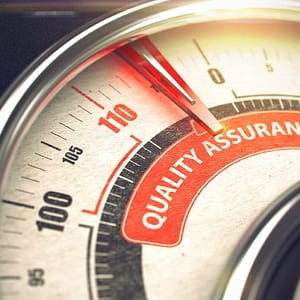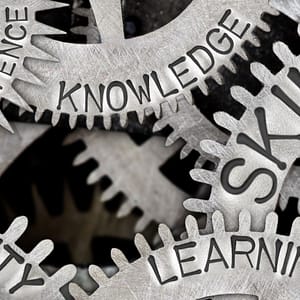High Quality Translation: Terminology Management to the Rescue
Communicating effectively across different languages and cultures requires accurate, consistent translation that reflects an organization’s brand voice. This is where terminology management comes in – it helps ensure your language is used consistently and correctly across all communication channels. In this article, we discuss the value of terminology management and examine some key tools that help improve overall translation quality while boosting efficiency.
What Is Terminology Management and Why Does It Matter?
Effective terminology management establishes a standardized, efficient, and sustainable process for managing specialized terms, preferred translations, and stylistic guidelines. By ensuring that language assets are applied consistently across translated materials, organizations can improve the clarity and effectiveness of their communications, increase efficiency in translation and localization workflows, reduce the risk of errors and inconsistencies, and enhance the overall quality of their content.
Below, we look at some key tools: multilingual glossaries and translation memory.
Multilingual Glossaries
A multilingual glossary – also called a terminology database, term base, or lexicon – is a list of terms and their corresponding translations in the target language(s). Glossaries maintain consistency in the terminology used across all translated content, enabling translators to use the pre-established terms correctly and consistently each time they appear in the text.
Certain key elements should be included in a comprehensive multilingual glossary. These include:
- Terms unique to the organization, such as brand-specific terminology, slogans, and abbreviations.
- Industry-specific terms, particularly when words have potential synonyms. (For example, the terms “smartphone” and “mobile device” may be interchangeable, and “e-learning” may also be referred to as “distance learning.” A glossary should note the preferred term.)
- Terms that are not to be translated, such as company names, taglines, and/or product names.
A thorough glossary includes customized fields such as definitions, context, date of entry, name of reviewer, etc. It is especially helpful to translators to see examples of how a term is used in context.
Get in Touch!
Reach out to discuss your next translation project with a member of our team.
Creating a Multilingual Glossary
Defining important terms is the first step in creating a glossary, and existing translated materials can be a good starting point for identifying these terms. Language service providers can use automated term extraction tools to speed up the process of identifying frequently used nouns, verbs, or phrases. A linguist then reviews the extracted terms to produce a final list for the glossary. Once the source terms are approved, they are translated. If applicable, an organization’s in-house reviewer may assess the terms and their translations. If this process is not completed upfront, a glossary can still be created after a project is finished, providing a useful resource for future work.
Translation Memory
Translation memory (TM) is a database of previously translated content that can be reused in future work. When a translator is working on a new project, they can leverage the TM created from previously translated content, saving time and ensuring consistency.
A TM saves “segments” of text – a word, phrase, sentence, paragraph – along with its translation in the target language. When a translator begins working on a new project, the TM software compares the source text to the content in the TM database. (Note that TM is not machine translation or an AI tool.) If there are any matches, the software suggests the pre-translated content. The translator reviews the suggestion, and can choose to reuse the previously translated segment, either in its entirety or with minor modifications to account for any differences in context or phrasing. The TM not only leads to a more efficient process but ensures consistent terminology across all translated content.
The TM progressively builds a robust database of translated content, which can then be reused in future translation projects. As a result, over time, the translation process becomes faster and more accurate, and the translated content more consistent.
Types of Content That Can Benefit From Translation Memory
While most content can benefit from TM, certain types of content are particularly well suited to the tool. These include:
- Product descriptions and technical documentation. Product listings and catalogs, along with manuals, user guides, instructions, and product specifications often contain repetitive phrases and terminology, making them ideal candidates for TM, as the translated segments can be reused across multiple channels. As this material undergoes periodic updates, a good percentage of text will often remain consistent year over year.
- Legal and financial. Legal and/or financial documents such as contracts and annual reports often contain complex and highly specialized terminology that must be translated in an accurate and consistent manner.
- Software, websites, and apps. User interfaces and menus that need to be translated consistently across different languages can benefit from the accuracy and consistency assured by a TM, even as updates are released and new features added.
TM usage is not beneficial for all content types, namely creative copy, as well as the obviously unsuitable genres of literature and poetry. Other content that does not yield the repetitions necessary for a strong TM includes exhibition didactics, opinion pieces, testimonials, and analytical materials, as well as shorter, “unique” copy used in advertising and marketing.
Featured Services
Learn more about…
Establish Your Approach to Terminology Management
Ultimately, an investment in terminology management is an investment in the success and sustainability of an organization’s language services program. Glossaries and TMs reduce ambiguity to improve clarity. When used consistently, they ensure that all materials adhere to specified terminology and maintain a cohesive brand voice. For organizations with ongoing translation needs, terminology resources help maintain the preferred language and style across departments, business units, and regions. Because language assets develop and become more robust over time, they serve as a vital tool that leads to long-term cost savings and enables organizations to scale their language operations more effectively.
Get in touch to discuss your language assets. Our team can help you develop an approach to terminology management that will meet your organization’s goals.
 Named to the 2024 Inc. 5000 list of fastest-growing companies and ranked among the world’s top 100 language service providers by CSA Research
Named to the 2024 Inc. 5000 list of fastest-growing companies and ranked among the world’s top 100 language service providers by CSA Research

